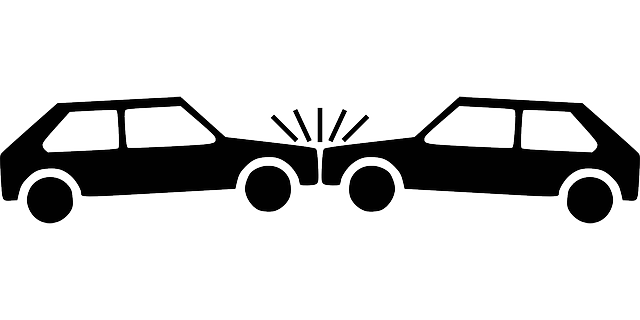Car crashes, with their screeching tires, shattered glass, and heart-stopping collisions, are the epitome of chaos. In a split second, lives can be forever altered, leaving a trail of devastation in their wake. But what if we take a step back from the aftermath, stepping into the realm of creative writing? A car crash is not just a collision of metal and bodies; it is a symphony of terror, resilience, and vivid emotions that can be captured through the art of words. In this article, we explore the intriguing world of describing a car crash through creative writing, harnessing the power of language to paint a vivid and immersive picture of chaos in motion. So buckle up and brace yourself as we delve into the exhilarating journey of capturing chaos, one word at a time.
Contents
- Introduction: Recreating the Chaos: How to Write a Car Crash Scene That Engages Your Readers
- 1. Setting the Stage: Capturing the Atmosphere and Surroundings of the Crash
- 2. Vivid Imagery: Making Each Detail Count in Describing the Collision
- 3. Utilizing Sensory Descriptions: Engaging Your Reader’s Senses to Evoke Realism
- 4. Emotions in Chaos: Portraying the Impact on Characters and Readers Alike
- 5. Dynamic Action: Crafting an Engaging and Realistic Sequence of Events in the Crash Scene
- 6. Reflecting the Aftermath: Lane of Dust and Shattered Glass
- 7. Impactful Dialogue: Portraying the Reactions and Communication Amidst Chaos
- 8. Writing with Purpose: Conveying the Message and Theme Through the Car Crash Scene
- Frequently Asked Questions
- Closing Remarks
Introduction: Recreating the Chaos: How to Write a Car Crash Scene That Engages Your Readers
Writing a car crash scene is no easy task. It requires careful thought and precision to recreate the chaos and evoke emotional engagement from your readers. In this post, we will explore some key techniques that can help you craft a powerful car crash scene that will leave your readers on the edge of their seats.
1. Set the stage: Before the crash occurs, it’s crucial to create a vivid picture of the scene. Describe the weather conditions, the time of day, and any other relevant details that set the tone for the impending chaos. This sets the stage for your readers and prepares them for the impact that is about to unfold.
2. Use sensory details: Engage your readers’ senses by incorporating descriptive language. Go beyond visual cues and describe the screeching tires, the pungent smell of burning rubber, or the deafening sound of metal crunching against metal. By appealing to multiple senses, you can immerse your readers in the moment and make the scene feel more authentic.
1. Setting the Stage: Capturing the Atmosphere and Surroundings of the Crash
When diving deep into the investigation of an aviation accident, one crucial aspect that demands attention is capturing the unique atmosphere and surroundings at the crash site. This allows investigators to gather valuable information about various factors that might have contributed to the incident. Here’s a closer look at how professionals go about setting the stage to capture the essence of the crash.
First and foremost, investigators meticulously document the wreckage’s immediate surroundings. Carefully examining the terrain, vegetation, and any barriers or obstacles present provides essential contextual information. This observation could uncover crucial clues about how the crash unfolded, such as whether the aircraft experienced any difficulties maneuvering due to environmental factors or external interference. Additionally, documenting the weather conditions at the time of the accident plays a significant role in understanding the crash dynamics. Elements like visibility, wind patterns, and precipitation can shed light on potential weather-related complications that may have impacted the flight.
- Photographs of the crash site from various angles help preserve the scene in its original state and provide an in-depth visual record.
- Drawing topographical sketches of the area assists in identifying factors that may have affected the aircraft’s trajectory.
- Collecting environmental samples, such as soil and vegetation, enables investigators to identify foreign substances that could be relevant to the incident.
By painstakingly capturing the atmosphere and surroundings of the crash, investigators can create a comprehensive picture of the circumstances leading up to the accident. These details help piece together the puzzle of what went wrong, ultimately paving the way for improved safety measures and preventing future incidents.
2. Vivid Imagery: Making Each Detail Count in Describing the Collision
In order to effectively capture the essence of a collision, it is crucial to employ vivid imagery that transports the reader right into the heart of the action. By providing intricate details and utilizing sensory descriptors, you can paint a picture so vivid that your audience can almost feel the impact themselves. Here are some key strategies to make each detail count in describing a collision:
- Engage the senses: Evoke a sensory experience by describing not only what was seen, but also what was heard, smelled, and felt immediately before and after the collision. The jarring screech of tires, the acrid smell of burning rubber, and the bone-rattling impact will help immerse your readers in the moment.
- Focus on precise timing: Capture the exact sequence of events leading up to the collision. Describe the split-second decisions that were made, the frenetic movements, and the suspense that built up just before impact. This will create anticipation and intensify the experience for the reader.
- Highlight the aftermath: Paint a detailed picture of the aftermath in the aftermath of the collision. Illustrate the twisted metal, shattered glass, and the chaotic scene that ensues. Laying out the consequences of the collision will enhance the realism and impact of your description.
Mastering the art of vivid imagery will add depth and authenticity to your writing, allowing your readers to fully immerse themselves in the collision you are describing. By engaging their senses, focusing on precise timing, and highlighting the aftermath, you can create an evocative and memorable description that leaves a lasting impression.
3. Utilizing Sensory Descriptions: Engaging Your Reader’s Senses to Evoke Realism
When it comes to creating a realistic and engaging piece of writing, utilizing sensory descriptions is a powerful tool that should not be overlooked. By appealing to your reader’s senses, you can transport them directly into your world and make the experience come alive. So, how can you effectively engage your reader’s senses and evoke a sense of realism in your writing? Let’s take a closer look.
1. Visual Descriptions: Paint a vivid picture in your reader’s mind by describing the scene using rich visual imagery. Use colorful and descriptive language to help your reader visualize the setting, characters, and objects.
- For example, instead of simply saying, “The sun was shining,” you could say, “The golden rays of the sun beamed through the thick foliage, casting a warm glow on the lush green meadow.”
- Use similes and metaphors to create vivid visual imagery. For instance, “Her voice was as smooth as velvet” or “The tall buildings loomed over the city like giants.”
2. Auditory Descriptions: Engaging your reader’s sense of hearing can greatly enhance the realism of your writing. Describe the sounds in your scene to create an immersive experience for your reader.
- Instead of simply mentioning that a character was crying, you could describe the sound of their tears hitting the floor, the sniffles, and the muffled sobs.
- Include onomatopoeic words to reproduce sounds, such as “the crackling fire,” “the babbling brook,” or “the booming thunder.”
4. Emotions in Chaos: Portraying the Impact on Characters and Readers Alike
As readers, we immerse ourselves in stories to experience a range of emotions, and few things grip us more profoundly than chaos. When an author skillfully portrays the impact of chaos on characters, it resonates with readers on a visceral level, evoking empathy, fear, and anticipation. The interplay of emotions in chaotic situations brings a depth to characters that we can relate to, making their struggles and triumphs all the more meaningful.
In chaos, a character can experience an array of emotions, from despair and confusion to determination and resilience. By delving into this emotional rollercoaster, authors can create multi-dimensional characters that elicit emotional investment from the readers. The skill lies in crafting an authentic portrayal of emotions, allowing readers to understand the turmoil and psychological impact the characters endure.
- Empathy: Chaos in storytelling provides an opportunity for readers to empathize with characters who face unpredictable and adverse circumstances. Our own experiences of chaos and instability in life allow us to connect with the characters at a deeper level, magnifying our emotional investment.
- Anticipation: Chaos generates a sense of anticipation as readers are kept on the edge of their seats, eagerly wondering how characters will navigate the mayhem. This anticipation creates a heightened emotional state, making the story more engaging and unpredictable.
- Fear: Chaos often brings fear along with it. When characters face uncertain situations, formidable challenges, or daunting foes, readers can experience an adrenaline rush, their hearts racing in sync with the characters’ perilous journeys.
5. Dynamic Action: Crafting an Engaging and Realistic Sequence of Events in the Crash Scene
In order to create a captivating and realistic sequence of events in the crash scene, it is important to engage the audience and keep them invested in the story. Here are some dynamic actions you can take to achieve this:
1. Build tension: Start by setting the scene and creating a sense of anticipation. Use descriptive language to evoke emotions and draw the readers into the crash scene. Make them feel like they are right there, witnessing the chaos unfold.
2. Use sensory details: Paint a vivid picture by incorporating sensory details such as the screeching of tires, the smell of burning rubber, and the taste of adrenaline in the air. These details help to immerse the readers in the crash scene and make it more believable.
3. Introduce unexpected twists: Surprise your audience by introducing unexpected elements to the crash scene. Perhaps a bystander rushes to the aid of the injured, revealing a hidden hero, or a small explosion adds a new layer of danger and excitement. These twists add depth to the story and keep the readers on the edge of their seats.
4. Include diverse perspectives: To make the crash scene feel realistic, include perspectives from different characters involved. This allows the readers to see the event from multiple angles, adding complexity and authenticity to the sequence of events.
By incorporating these dynamic actions into the crafting of your crash scene, you can create an engaging and realistic experience for your audience. Remember to carefully consider the order and timing of events, ensuring a seamless flow that keeps the readers captivated until the very end.
6. Reflecting the Aftermath: Lane of Dust and Shattered Glass
As the dust begins to settle and the chaos subsides, one cannot help but be awestruck by the sight before them. The aftermath of the recent catastrophic event paints a grim picture of destruction and despair. Rows and rows of shattered glass and debris line the once vibrant alley, creating an eerie scene that evokes a peculiar blend of melancholy and curiosity.
Walking through this desolate lane, it becomes apparent just how fragile our surroundings can be. The countless shards of broken glass, irrevocably transformed from their former form, reflect the harsh reality that life can change in an instant. Each fragmented piece holds a story of its own, a testimony to the sheer force that has taken its toll. Although a bleak sight, it also serves as a powerful reminder of our resilience and the strength to rebuild.
- Reflection: The shattered glass mirrors the fragility of life, reminding us to appreciate every moment.
- Glimpse into Chaos: The devastated alley provides a window into the chaos that unfolded during the event.
- Symbolic Breakdown: The shattered glass acts as a symbol of the destruction and transformation caused by the catastrophe.
- Resilience in Debris: Amidst the destruction, the debris reveals our determination to rebuild and move forward.
7. Impactful Dialogue: Portraying the Reactions and Communication Amidst Chaos
When it comes to writing impactful dialogue, the key lies in portraying genuine reactions and communication amidst chaos. Whether you are crafting a thrilling action scene or depicting intense emotional moments, creating dialogue that resonates with readers is crucial for an engaging story. Here are some tips to help you master the art of creating impactful dialogue:
- Show, don’t tell: Instead of explicitly stating characters’ emotions, let their dialogue and actions reveal their true feelings. This allows readers to experience the chaos firsthand, making the scene more immersive.
- Inject tension: Chaos often brings out the best and worst in people. Develop conflicts, disagreements, and clashes between characters to heighten the drama and create an intense atmosphere.
- Vary dialogue length and pace: In chaotic scenes, dialogue should mirror the frenetic energy. Mix short, snappy exchanges with longer, more contemplative responses to create a natural rhythm that keeps readers on their toes.
Furthermore, it is important to give each character a unique voice and stay consistent with their personalities in chaotic situations. This ensures that readers can easily distinguish between characters and understand how they react under pressure. Remember, impactful dialogue not only advances the plot but also adds depth to your characters and maintains the reader’s interest. By mastering the art of portraying reactions and communication amidst chaos, you’ll be able to captivate your audience and keep them eagerly turning the pages.
8. Writing with Purpose: Conveying the Message and Theme Through the Car Crash Scene
In order to effectively convey the message and theme through a car crash scene, it is essential to pay attention to the details and choose the right words and descriptions. Firstly, it is important to set the scene by vividly describing the wreckage, the twisted metal, shattered glass, and the chaos that ensues. By using sensory language and painting a clear picture, the reader can be immersed in the intensity of the moment.
Secondly, focus on the emotions and reactions of the characters involved. Highlight their fear, shock, and disbelief to evoke empathy and bring the scene to life. Utilize descriptive language to express their trembling hands, racing heartbeats, and the silence that follows the impact. This allows readers to connect with the characters on a deeper level and grasp the gravity of the situation.
Additionally, when writing with purpose, it is crucial to consider the broader message and theme the car crash scene is meant to convey. Is it a cautionary tale about the dangers of reckless driving? Is it a metaphor for the fragility of life and the unexpected turns it can take? By aligning the actions and consequences with the intended theme, the message will resonate more powerfully with the readers.
To enhance the impact of the scene even further, incorporate dialogue between the characters involved. Use italics to emphasize their thoughts and fragmented sentences to create tension. This will add a layer of authenticity to the scene and allow readers to experience the raw emotions firsthand.
In conclusion, crafting a car crash scene with purpose requires attention to detail, emotional depth, and alignment with the intended message and theme. By carefully choosing words, incorporating sensory description, and focusing on character reactions, the scene can be made compelling and memorable for readers.
Frequently Asked Questions
Q: What is the purpose of “Capturing Chaos: Describing a Car Crash in Creative Writing”?
A: The purpose of this article is to guide writers in effectively describing a car crash in a creative writing piece.
Q: Why is it important to accurately describe a car crash in creative writing?
A: Accurate and vivid descriptions of car crashes can elevate the intensity and impact of a narrative, creating a more engaging experience for readers.
Q: How can descriptive language enhance the portrayal of a car crash?
A: Descriptive language allows writers to vividly depict the chaos, emotions, and sensory details involved in a car crash, making the scene more memorable and compelling.
Q: What are some sensory details that can be utilized when describing a car crash?
A: Sensory details such as screeching tires, the smell of burning rubber, shattered glass, sirens blaring, and the taste of fear can significantly enhance the description of a car crash.
Q: Are there any specific techniques writers can employ when describing a car crash?
A: Yes, writers can use techniques such as metaphors, similes, onomatopoeia, and personification to create more impactful and dynamic descriptions of a car crash.
Q: Are there any guidelines to follow when writing about such a sensitive topic?
A: Yes, it is important to approach the topic with sensitivity, avoiding insensitive language, gratuitous violence, or graphic content that may offend or upset readers.
Q: How can writers convey the emotional impact of a car crash?
A: Writers can convey the emotional impact of a car crash by exploring the internal thoughts and feelings of characters involved, conveying their shock, fear, or grief through their actions or reactions.
Q: Can you provide an example of an effective car crash description?
A: “The collision sent shards of glass dancing through the air, catching the glimmer of the streetlights like a macabre ballet. The screeching metal tore through the calm night, drowning out the desperate pleas of brakes. In an instant, chaos took hold, as the twisted mangle of steel and shattered glass whispered tales of lives forever altered.”
Q: What should writers aim to achieve when describing a car crash in their writing?
A: Writers should strive to create a vivid and immersive experience for readers by painting a picture with their words, capturing the chaos, danger, and impact of a car crash through imaginative and evocative descriptions.
Q: Are there any additional resources that writers can refer to for further guidance?
A: There are plenty of online resources and creative writing guides available that offer further insights and techniques to effectively describe car crashes in fiction.
Closing Remarks
In conclusion, capturing the chaos of a car crash in creative writing requires vivid description and attention to detail, allowing readers to experience the event through the author’s words.








